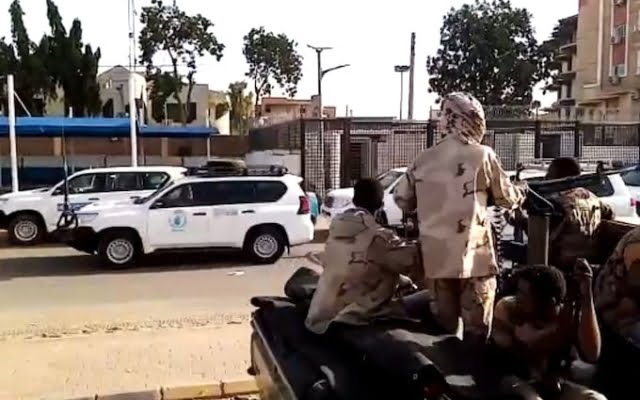 The convoy leaves Khartoum as fighting continues in the Sudanese capital. Credit: AFP
The convoy leaves Khartoum as fighting continues in the Sudanese capital. Credit: AFP
Saturday evening, US Special Forces using an MH-47 Chinook swept into the fighting capital of Sudan from a base in Djibouti to rescue 100 embassy staff in less than an hour.
But when the helicopters took off and headed home, they left a small detachment of British soldiers on a top-secret mission.
This unit, which likely originated from one of the regular SAS combat squadrons, immediately mustered 24 British diplomats, personnel and families, plus about a dozen more people from Norway, France and the Netherlands.
Soon they will follow the road to the north. But their journey to safety was far from over.
Permission had to be given for a large British military contingent to meet them.
The message came from Rishi Sunak around 3am, near the table of a hastily scheduled COBR meeting.
The Prime Minister was informed that the security situation continued to deteriorate over the weekend.
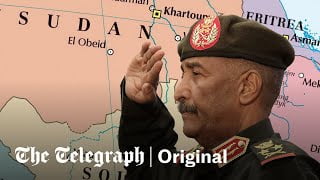
An RAF aircraft, including at least one Hercules and an A400M Atlas, took off from the UK to prepare for a rescue operation from a British military air base in Cyprus.
More than 1,200 people in total from 16 Colchester-based The 4th Air Assault Brigade, the Royal Marines and the RAF were preparing for the Prime Minister's decision.
p>How the daring rescue was carried out
When dawn broke on Sunday, other countries decided to launch their own operations.< /p>
Turkey was forced to postpone one of its missions in Khartoum after there were reports of explosions near a mosque chosen as a designated rallying point. the country's embassy.
During the chaos in Khartoum, a French citizen believed to be a member of the military or diplomatic corps was reportedly shot dead while trying to evacuate. Both Sudanese belligerents have blamed each other for the alleged attack.
Many countries have advised their citizens to leave via Port Sudan on the Red Sea, about 400 miles northeast of Khartoum and about 500 miles by road.
Egypt said one of its diplomats was wounded in the shelling, although it did not provide any details.
Saudi Arabia, meanwhile, has already flown 91 Saudi Arabian citizens and about 66 people from other countries from Port Sudan by warship across the Red Sea to Jeddah.
Jordan, South Korea, Sweden and the Netherlands were also developing military options to ensure the safe passage of their citizens.
 Smoke from the fighting over Khartoum. Photo: REUTERS
Smoke from the fighting over Khartoum. Photo: REUTERS
In London, after the decision of the Prime Minister to launch the operation, the plan of the Ministry of Defense began to operate.
The Hercules and A400M Atlas aircraft used are propeller-driven, meaning they are better suited to uneven ground runways that might be encountered in the heat of hostilities. Jet engines, such as those on RAF C-17 heavy transport aircraft, can be easily damaged by debris ejected after landing.
The decision was made not to fly directly to Khartoum Airport, located in the city center, as it was too risky given the current situation.
Instead, British aircraft rushed to the Wadi Seidna air base, about 20 km north of the capital, where the Sudanese Air Force is based. .
Once on the ground, the planes disgorged several 4×4 all-terrain vehicles, which then headed south towards the city where the fighting was taking place.
Timeline of the conflict in Sudan
Meanwhile, in the center of Khartoum, the SAS team briefed the embassy staff. The identities were established and the military team detailed what civilians should do if the convoy came under fire or the car broke down.
Weapons were supposed to be ready, and a radio check was probably carried out. to establish contact with the British troops at the airbase in Wadi Seidna and the road party heading for Khartoum.
Military planners debated whether to send a visiting party and a party directly to the embassy, which would increase the risk to British personnel. However, it was probably decided that it would be better to have two options on the ground in case of unforeseen and potentially catastrophic incidents as the mission unfolded.
Tensions may have risen when, for the first time since the fighting began, an unverified video was released that briefly showed rebel leader Mohamed Hamdan Daghalo, known as Hemedti, in combat gear in the passenger seat of a pickup truck. surrounded by cheering troops, near the presidential palace of Khartoum.
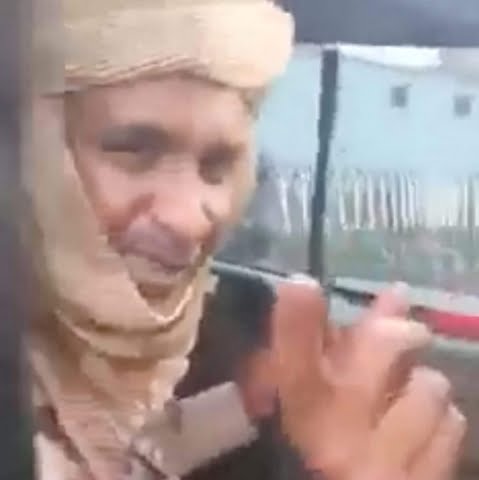 Mohamed Hamdan Dagalo posed for a video said to be depicted with troops heading for the Presidential Palace. Photo: REUTERS
Mohamed Hamdan Dagalo posed for a video said to be depicted with troops heading for the Presidential Palace. Photo: REUTERS
In this case, it is believed that both sides escaped the city without incident and did not meet the RSF or government forces.
As all personnel and equipment were loaded back onto the aircraft, the Hercules and A400M then took off, heading back to the safety of Cyprus.
After landing at RAF Akrotiri in southwestern Cyprus, the civilians were likely interrogated by the debriefing team of the Ministry of Defense. A Defense Humint unit that specializes in «human intelligence.»
While this unit is more used to launch agents into enemy networks, it also has the authority to extract as much vital information as quickly as possible from people who have recently experienced hostile or chaotic environment to provide political and military leaders and planning staffs with the clearest possible view of the reality on the ground.
This information will be added to other intelligence sources to better prepare for the next and possibly , the hardest part of the government's operation: to ensure the well-being of those British citizens who remained in Sudan.


































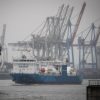





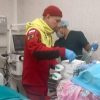














Свежие комментарии